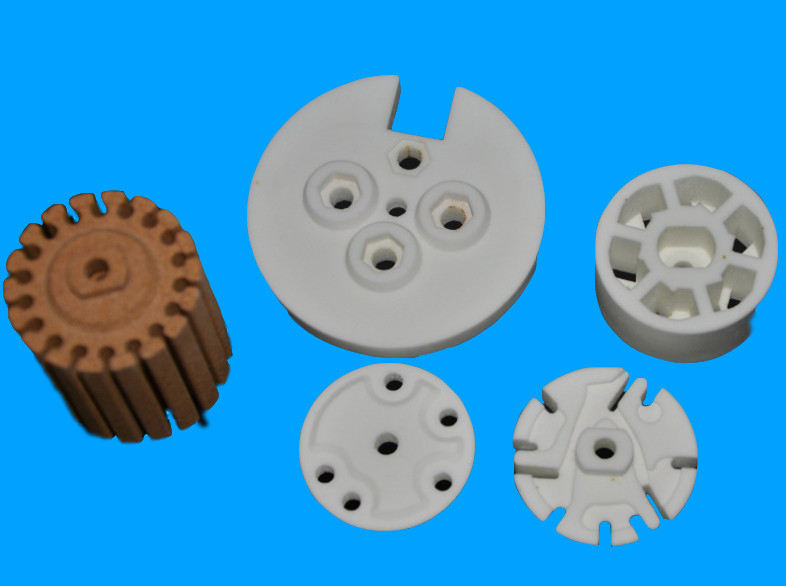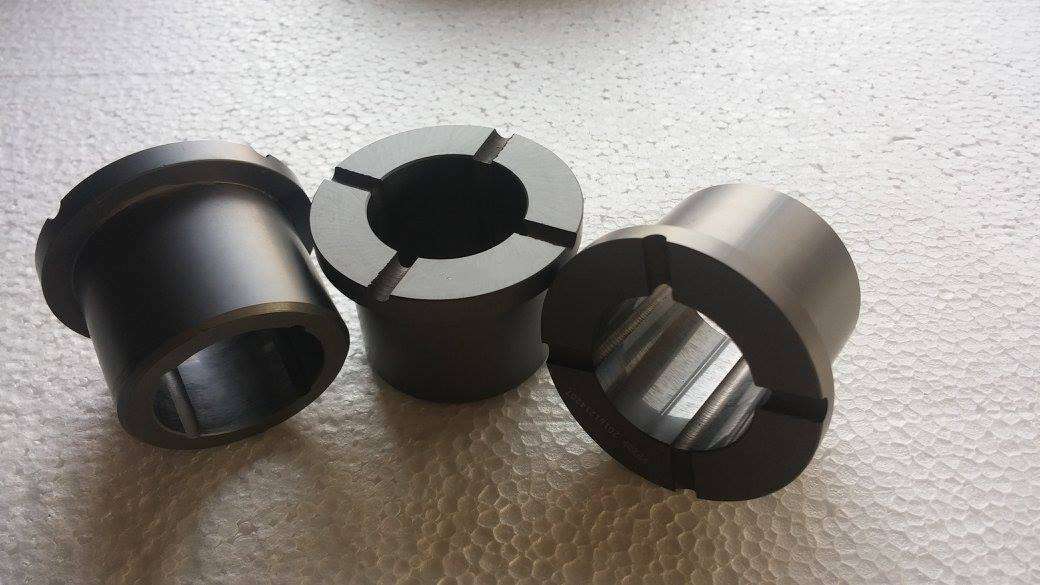1. Overview
The basic components of Mullite are Al2O3 and SiO2, and the chemical formula is 3Al2O3 ·2SiO2. It is a silicalite (Al2O3·SiO2) structure with oxygen vacancy defect. Mullite belongs to the plagric polycrystalline system, with cell constant a= 7.584nm,b= 7.693nm,c= 2.890nm, and theoretical density of 3.2g /cm3.
Mullite porcelain is a ceramic with mullite (3Al2O3·2SiO2) and quartz (SiO2) as the main crystal phases. It is a high-frequency ceramic in the electronics industry. Porcelain often belongs to this type of ceramics, the earliest high-frequency device porcelain used. Mullite porcelain has good production process performance, but poor mechanical strength and electrical properties, so it is only used for general high-frequency device parts. Because it has a fine surface structure, it can be used as a substrate for depositing carbon film, so it is still widely used to make the substrate for carbon film resistance.
Natural mullite is rarely present, but if clay or Al2O3·SiO2 series materials are heat-treated at high temperature, It is easy to precipitate mullite. Because mullite does not melt uniformly at 1828°C, it has worse heat resistance than alumina, but has a small thermal expansion coefficient and good thermal shock resistance. The crystals of mullite are needle-shaped, which makes the crystal grains cross each other, reducing slippage, and the deformation under high temperature is load small, it is often used to manufacture heat-resistant electrical insulating ceramics such as thermocouple protection tubes and electrical insulation tubes. The crystalline phase of corundum-mullite porcelain is not a single corundum, but mullite coexists, so it is called corundum-mullite porcelain. The main raw materials are clay and carbonate. Corundum-mullite porcelain has good electrical properties, high mechanical strength, good thermal stability, good process performance, low sintering temperature, and wide sintering temperature range, and it can be completed at one time with the glaze. It is widely used to manufacture parts for high-frequency devices with very strict requirements, such as high-frequency and high-voltage insulators, coil frames, capacitor shells and their insulating pillars, high-voltage switches, and other large-scale devices.
Barium feldspar is the main crystal phase of barium feldspar ceramics. The main raw materials are kaolin and barium carbonate.It’s process performance is very good, and the electrical performance is excellent, and the thermal stability of the material is also good. It’s disadvantage is that the mechanical strength is too low, which is caused by the large difference in thermal expansion coefficient between the crystalline phase and the glass phase.
2. Synthesis of mullite porcelain
(1) Formula of mullite porcelain
Mullite porcelain and corundum-mullite porcelain belong to the range of high-alumina porcelain, and their sintering temperature is high. In order to reduce the sintering temperature, alkaline earth metal oxides are often introduced in the form of natural minerals and chemical raw materials as admixtures, and BaO,CaO, MgO, etc.The mixture of alkali metal oxides should be avoided in additives.
(2) Production process of mullite porcelain
Mullite Porcelain and Corundum Mullite Porcelain contain considerable clay, has a certain degree of plasticity, and can be produced according to the general production work process. Hard raw materials are ground first, then soft raw materials and other chemical raw materials are added, and then ground together. In the production process, it is necessary to avoid mixing iron and other impurities. The ball and lining in the ball mill should be made of stone or corundum. The lining can also be made of rubber. The fineness of the raw material has a great influence on the sintering temperature and performance of the product. The finer the particle size, the higher the sintering temperature and the higher the flexural strength. In the case of 75 porcelain, the fineness of alumina is required to achieve a sieve residue of less than 1%.
Due to the poor plasticity of mullite and corundum mullite porcelain billets, it is best for the billets to be stale for a period. If necessary and according to the shape of the product and the nature of the ingredients, determine the molding method, such as dry pressure, grouting, isostatic pressure, etc
Mullite porcelain often cannot obtain complete high density in the temperature range of less than 1500℃. In the preparation process, ultra-fine powder materials should be used and sintered at a temperature of 1250°C to obtain a nearly completely dense mullite porcelain.
3.The properties and application of Mullite Porcelain
Because of its low dielectric constant and low electrical insulation properties, mullite porcelain is an ideal material for packaging modern new computer components.
It replaces alumina ceramic package shell and substrate materials in fast circuits, which can reduce signal transmission delay 17%~20%; it is also used for multilayer ceramic substrates for high-density packaging of large-scale and very large-scale integrated circuits, and black mullite porcelain It also provides ideal supporting materials for some optoelectronic devices.

Mullite porcelain products
Declaration: This article is provided by CERADIR™ users or obtained from Internet, the content does not represent the position of CERADIR™. We are not responsible for the authenticity/accuracy of the article, especially the effects of the products concerned. This article is for study only, it does not constitute any investment or application advice. For reprinting, please contact the original author. If it involves the copyright and/or other issues, please contact us and we will deal with it asap! CERADIR™ has the interpretation of this declaration.







